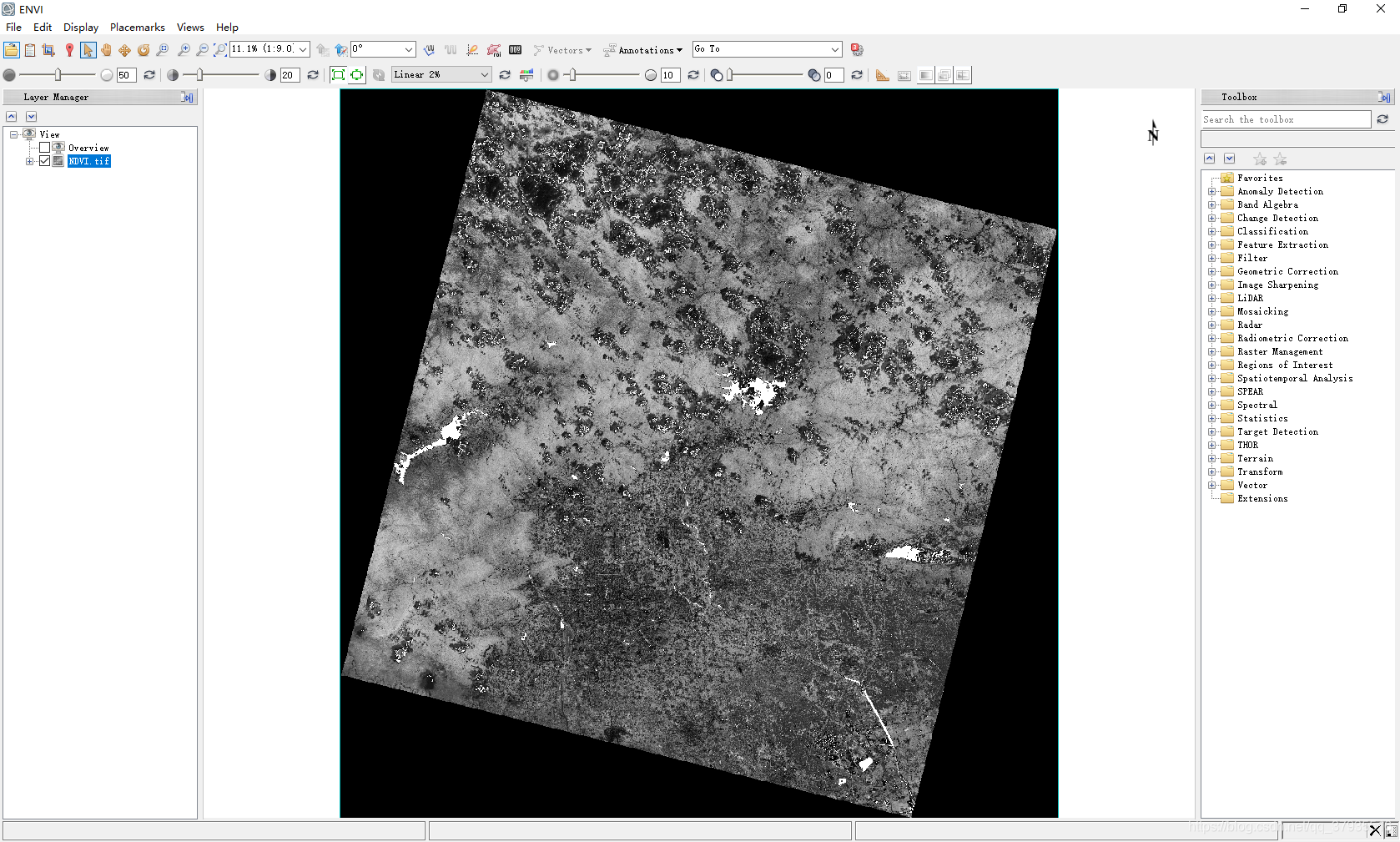源教程:https://rasterio.readthedocs.io/en/latest/quickstart.html
1.使用RasterIO读取栅格数据
# 使用RasterIO读取栅格数据
import rasterio
with rasterio.open('E:/data/L8_BJ_NRG.tif') as ds:
print('数据信息:')
print('数据格式:', ds.driver)
print(f'波段数目:{ds.count}')
print(f'影像宽度:{ds.width}')
print(f'影像高度:{ds.height}')
print(f'地理范围:{ds.bounds}')
print(f'反射变换参数(六参数模型):\n {ds.transform}')
print(f'投影定义:{ds.crs}') # 获取第一个波段数据,跟GDAL一样索引从1开始
# 直接获得numpy.ndarray类型的二维数组表示,如果read()函数不加参数,则得到所有波段(第一个维度是波段)
band1 = ds.read(1)
print(f'第一波段的最大值:{band1.max()}')
print(f'第一波段的最小值:{band1.min()}')
print(f'第一波段的平均值:{band1.mean()}')
# 根据地理坐标得到行列号
x, y = (ds.bounds.left + 300, ds.bounds.top - 300) # 距离左上角东300米,南300米的投影坐标
row, col = ds.index(x, y) # 对应的行列号
print(f'(投影坐标{x}, {y})对应的行列号是({row}, {col})') # 根据行列号得到地理坐标
x, y = ds.xy(row, col) # 中心点的坐标
print(f'行列号({row}, {col})对应的中心投影坐标是({x}, {y})') # 那么如何得到对应点左上角的信息
x, y = (row, col) * ds.transform
print(f'行列号({row}, {col})对应的左上角投影坐标是({x}, {y})')输出结果:
数据信息:
数据格式: GTiff
波段数目:3
影像宽度:7761
影像高度:7881
地理范围:BoundingBox(left=360885.0, bottom=4346085.0, right=593715.0, top=4582515.0)
反射变换参数(六参数模型):
| 30.00, 0.00, 360885.00|
| 0.00,-30.00, 4582515.00|
| 0.00, 0.00, 1.00|
投影定义:+init=epsg:32650
第一波段的最大值:65535
第一波段的最小值:0
第一波段的平均值:8122.7403364808
(投影坐标361185.0, 4582215.0)对应的行列号是(10, 10)
行列号(10, 10)对应的中心投影坐标是(361200.0, 4582200.0)
行列号(10, 10)对应的左上角投影坐标是(361185.0, 4582215.0)2.使用RasterIO创建栅格数据
# 使用RasterIO创建栅格数据
import rasterio
import numpy as np
# 读入的数据是绿,红,近红外波段的合成数据
with rasterio.open('E:/data/L8_BJ_NRG.tif') as src:
raster = src.read() # 读取所有波段
# 源数据的元信息集合(使用字典结构存储了数据格式,数据类型,数据尺寸,投影定义,仿射变换参数等信息)
profile = src.profile
# 计算NDVI指数(对除0做特殊处理)
with np.errstate(divide='ignore', invalid='ignore'):
ndvi = (raster[2] - raster[1]) / (raster[2] + raster[1])
ndvi[ndvi == np.inf] = 0
ndvi = np.nan_to_num(ndvi) # 写入数据
profile.update(dtype=ndvi.dtype, count=1)
with rasterio.open('E:/data/NDVI.tif', mode='w', **profile) as dst:
dst.write(ndvi, 1)在ENVI中打开生成的NDVI.tif文件:
